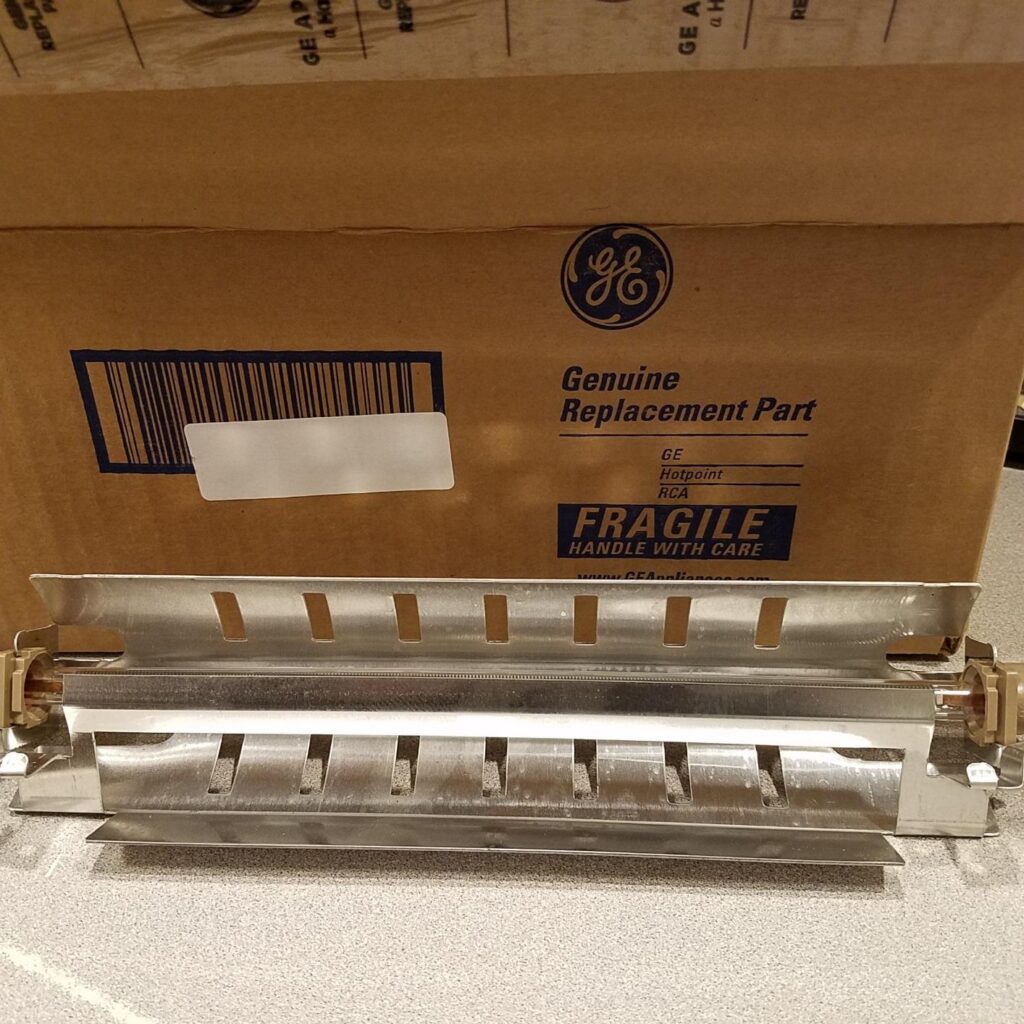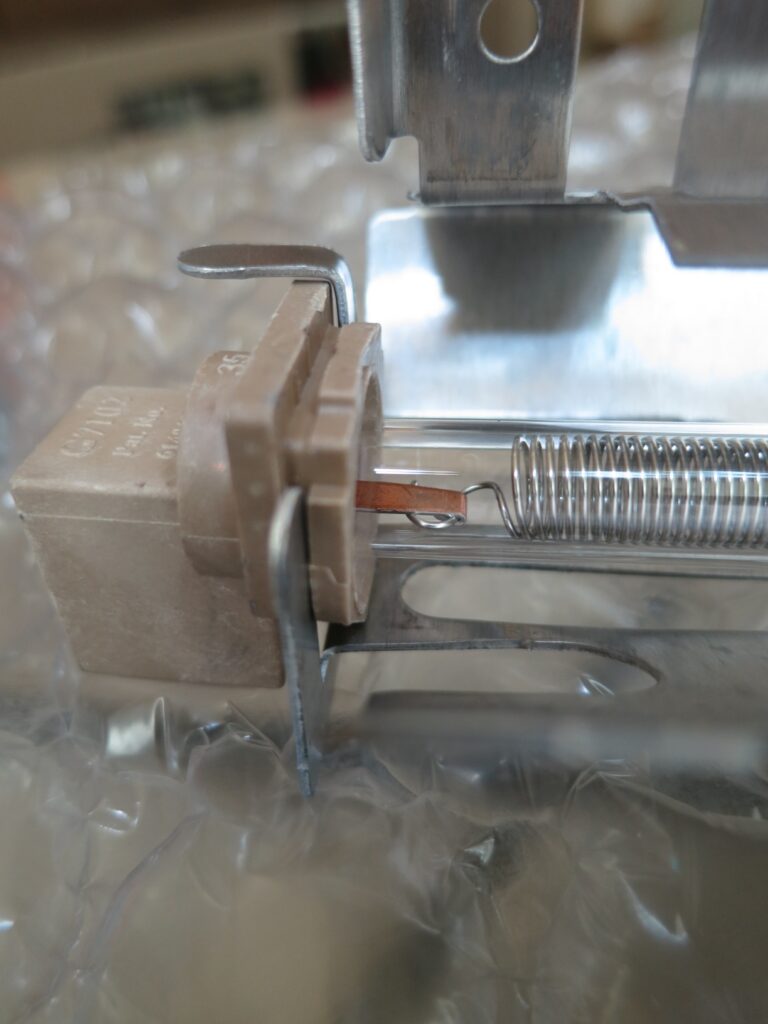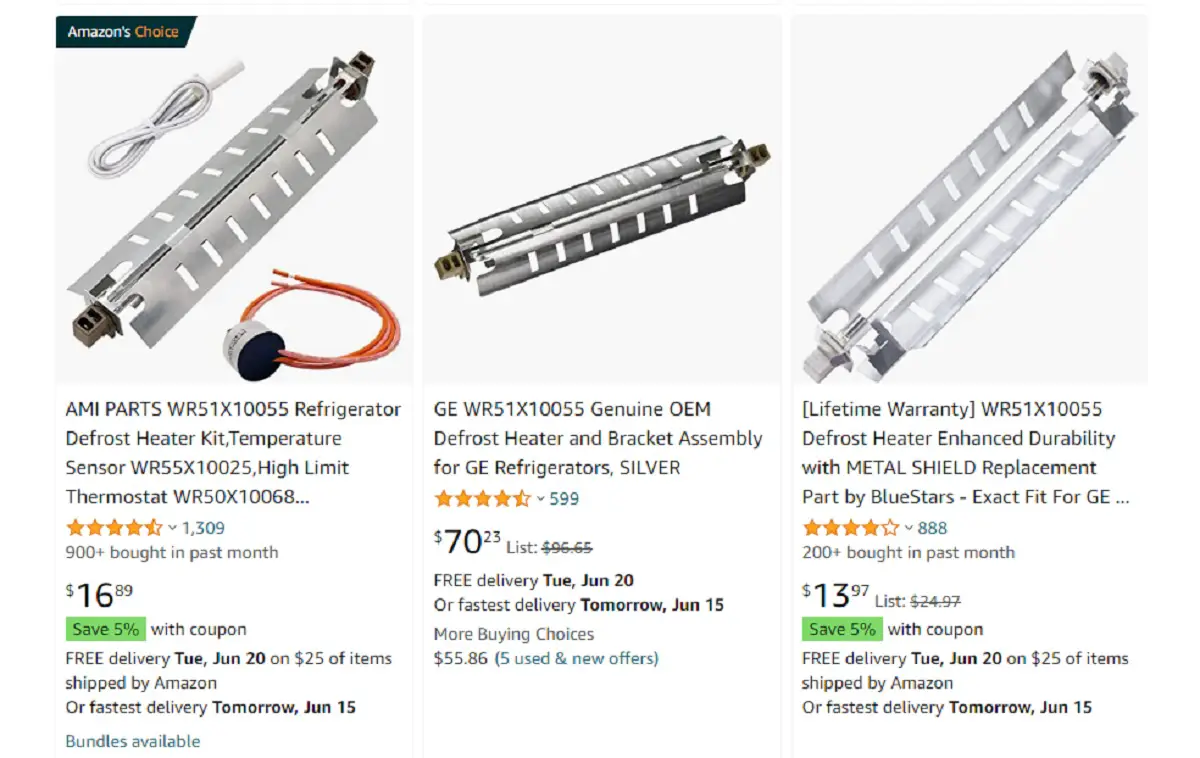Don’t be lured in by the cheap $14 price, the part won’t last long!
If you bought a GE or Kenmore refrigerator/freezer from Sears anytime in the last 20 years, you might’ve come across this problem, your freezer stays cold but your fridge warms up.
After Googling around, you find the likely culprit is frosted-over condenser coils behind a panel in the freezer caused by a defective defrost heater.
The part number is WR51X10055.
You search on Amazon and you come across two parts, a non-GE defrost heater for as little as $14, and a genuine one for upwards of $70.
My defrost heater problems started in 2017 and, do you know how many cheap, knock-offs I bought before buying the real thing?
Admittedly, 6.
Here’s the history of my cheapness that bit me in the behind below.
- 12/28/2017 – $24.18
- 7/12/2020 – $22.72
- 6/30/2021 – $40.04 (a two-pack)
- 1/21/2022 – $18.29
- 10/12/2022 – $19.26
…in total, I spent $124.79
If that ain’t an example of the cheap man spending the most, I don’t know what is.
From my purchase history, the first one lasted two and a half years and, since I had a multi-year experience with that one, I rolled the dice again.
The next one lasted a year and the others only several months before they burned out and needed replacing.
How did I know they needed replacing?
A big warning sign was the fridge water not dispensing water because they’d frozen up since the freezer was overcompensating, running too long.
Eventually, the defrost heater would go kaput, the fridge would get warm, and I’d transfer all the food to the garage fridge before ordering and installing a new, knockoff one.
These defrost heaters are simple, they heat up red, glowing hot on pre-determined cycles whenever your freezer needs defrosting.
But, it’s that high temperature on again off again cycle that eventually kills these knockoffs.
What I learned researching the difference between genuine and non-genuine defrost heaters is that the GE ones use copper end plates that hold the coiled-up wire that heats up.

Due to its low resistance (lots of electricity can flow through copper,) and its tendency to not expand and contract due to temperature changes, copper end plates hold up well to lots of high heat cycling.
In comparison, while aluminum (which is what I suspect is used on these cheap ones) has better resistance than copper, aluminum oxide, formed after aluminum gets in contact with moisture (freezer environment) can raise its resistance more than copper. Aluminum also expands and contracts with temperature fluctuations.
Here’s a closeup of a genuine one, the copper end plates visible.


And, here’s a knockoff one, the wire held together with cheap metal.

If you’re hard up on money, I’m not going to say not to buy the cheap one because, while it will give out again, $14 will buy you an extra couple of months of fridge/freezer use.
Just know that, if you plan to use your fridge for several years, save yourself the hassle, bite the bullet, and buy the genuine GE WR51X10055 defrost heater sooner rather than later.
Mine (GE one) cost $75.27 total and is the part I should’ve bought way back in 2017.
Instead, I spent over $120+ on cheap ones, not to mention time and energy replacing them.
We’ll see how long this genuine one lasts because if it lasts as long as the cheap ones, I’ll be sorely disappointed and will have to edit this blog post accordingly.
Fingers crossed!
